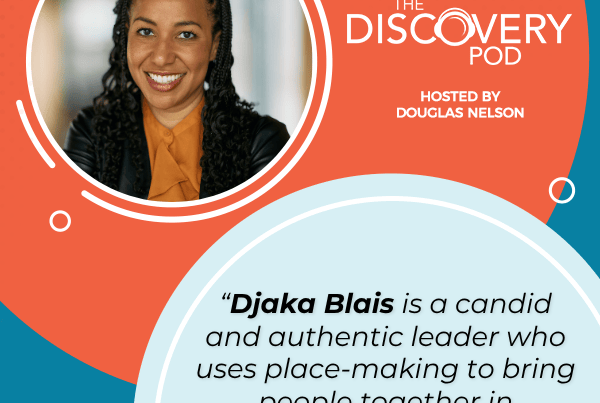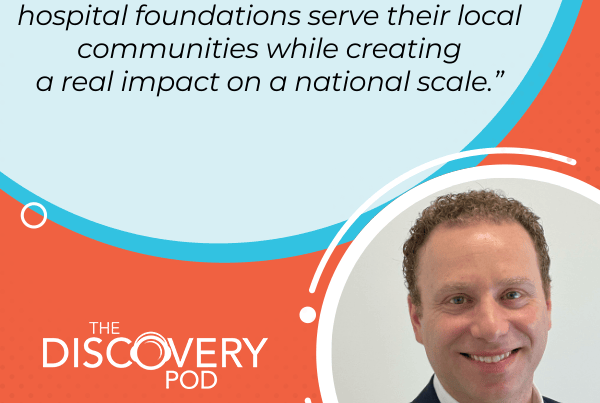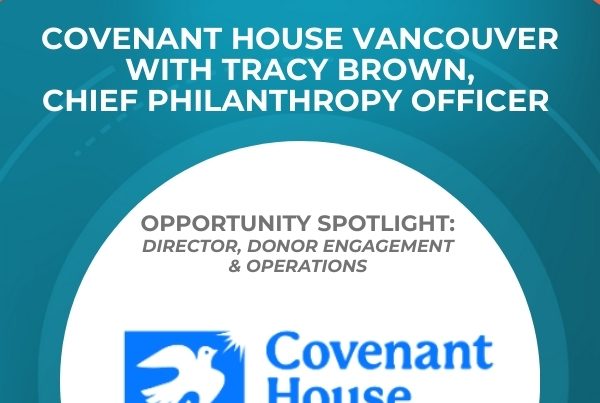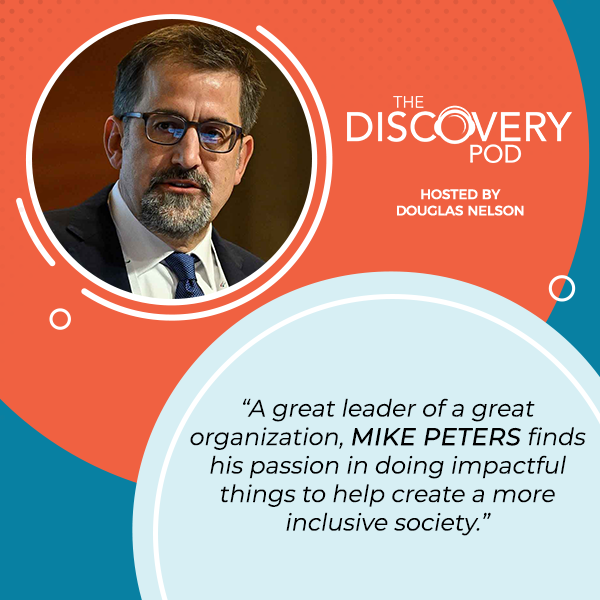
The IPC (International Paralympic Committee) is a global governing body of the sport and acts as the International Sports Federation. Mike Peters, the CEO of the International Paralympic Committee, discusses the critical moment when a CEO steps in to make a decision and course correct and how to rely on the team’s expertise. As the CEO of IPC, Mike draws on his expertise to let everyone understand the collective goal, share the collective vision, and let success happen. He shares his approach to diversity and how it embodies the organization’s core. He also dives into his perspective on the future of the disability movement and what it means for the rights of people. Tune in to this episode to see what great leadership looks like.
—
Listen to the podcast here
International Paralympic Committee With CEO Mike Peters
In this episode, we have Mike Peters. Mike is the CEO of the International Paralympic Committee, a former Para Olympian himself, and one of the greatest consensus-based leaders that I’ve had the privilege of encountering in my work here at the Discovery Group. Mike talks in our conversation about knowing when a CEO jumps in, how to course correct, and how to rely on the expertise of the team around you and the team of volunteers that lead the organization to their governing board. Mike also shares his perspective on the future of the disability movement and what it means for the rights of people around the world. If you’re interested in what great leadership sounds like and what it looks like, you’re going to enjoy this conversation with Mike Peters.
—
Welcome, Mike.
Thanks very much. I am glad to be here.
It is great to have you on the show. I’m sure many of our audience know, but I also know this is a question that you handle quite a bit. Can you start off our time by telling us exactly what the International Paralympic Committee is and how it fits in the universe of sports?
The International Paralympic Committee, commonly known as the IPC, is both a global governing body of sport and also, for the moment, which I can explain a little bit later, acts as the International Sports Federation for six parasports. What does any of that mean? We’re an organization that puts on sporting events for athletes with disabilities around the world.
Our pinnacle event is the Paralympic Games, which many of your audience hopefully would know, following the Olympic Games both summer and winter. Every four years, we are concerned with not just the pinnacle event at the Paralympic Games, but also grassroots efforts. From grassroots up through the best events in the world for disabilities is our business.
We’re a nonprofit organization in Bonn, Germany. We’re a member organization. Our members are organizations themselves, not individuals. We have over 200 members worldwide. The vast majority of those members are what we call National Paralympic Committee. It is so much like the National Olympic Committee or NPC. At the moment, we have 184 members or 184 nations that take part in our movement, the Paralympic movement.
Our members include seventeen International Sports Federations, not including the sports that we individually run. Those are things like canoeing, wheelchair rugby, rowing, or boccia. In addition to the International Sports Federations and the NPCs, we have some regional organizations. There are five regions, which are the association of National Paralympic Committees within a region. They have their own body. We also have four international organizations of support for the disabled. Those are the founding members of the movement, some of whom oversee some sports and, for example, world boccia.
For those of us who know watching the Paralympic games on television or many of our audience who remember the Paralympic games were here in Vancouver in 2010, the games look complicated to put on. There are lots of logistics. What you described in terms of how your membership works sounds like one of the most complicated governance and organizational coherence challenges that we could come up with anywhere in the world. How do you keep it all together and keep it moving in the same direction?
We’re getting started. We haven’t talked about anti-doping or athlete classification yet. It’s a good point. Also, what might be of interest here is that the games aren’t the only thing we do. In fact, it’s just one of them. There are four business areas for the IPC. The one that most people are aware of would be putting on the Paralympic games or overseeing the delivery of the Paralympic game in collaboration with the host cities.
In addition, we’re a member organization. A good portion of our work is put into program delivery for those members. As you can imagine, with 184 nations participating in the Paralympic movement, we have quite a range of members from the various sophisticated NPCs like NPC Canada to mostly volunteer-based and resource-constrained members in certain parts of the world. What we’re trying to do is meet our members where they are and support them where they are but also try to reduce the gap between the haves and the have-not.
A third area of our business is what I would call impact. Here, we are trying to get better. We’re a sports organization, and we always will be, but we also recognize that we’re part of a social movement when it comes to disability rights. Sport is our mechanism to try and make a difference in a more inclusive society. What we want to do is get better and more sophisticated in how we speak about the value of parasport or sports for people with disability and how we speak about return on investment.
That is so that we can get the ear, provide the answers, and know what the important questions are for various funders, governments, ministries, and so forth so that we can showcase the great work that people are doing around the sport for people with disabilities in their respective territories and increase investment there. We are building out opportunities not just for kids but for their families, communities, and, ultimately, societies.
The fourth area of our business is we’re still the federation four. We used to be this federation for ten sports. Four of those left. They integrated with the able-bodied international federation. This is our snow sports with this. We’re in the business still of putting on world championships and world cups for various sports like ice hockey, athletics, swimming, shooting, powerlifting, and dance.
That’s our business. How do we keep it going? We’re flying a little bit by the seat of our pants, or relatively, I like to think our plus as a bootstrapping organization is we do a lot with a little. We have 130 staff living in Bonn. There are a little over 40 different countries represented on our team. Everybody knows their role and is committed to trying to do what they’re supposed to do to the best of their abilities. We’re directed by a strategic plan. Every four years, our members and our governing board identify the strategic direction for the organization. For the management team, our mandate is to deliver that strategic plan every four years.
Before we get into the governing board, you know I do want to have a conversation there. One of the things that jumped out at me when I had the chance to meet you and your leadership team stuck with me long after I had left Bonn was how small the team is to put on something that in my mind and the world’s mind is so enormous.
The dedication of the team there is incredible. You’d expect that level of professionalism at a prominent international organization. I would’ve expected there to be ten times more people doing the work that your team does. As CEO, how do you keep that focus on execution at high volume and high pace all the time? How do you keep the team moving in that direction?
First of all, it’s a very fair point. If we were to have a bigger team, we could put people to work from day one. Let me acknowledge that. An incredibly committed, hardworking group united in their passion for the purpose that this organization has. How do I keep it going? It’s certainly not, in any way, all about me. I’ve been in this role formally since October 2019. One thing I wanted to do very quickly was to broaden the senior executive team.
We have five chiefs. Not everybody has that title, and I can explain that. We have five executive leaders in addition to myself. I’m in this privileged position of hiring smart people who know a lot more than me in their respective areas. I trust them to do their thing. They keep me in the loop as needed or as required. That model cascades down through our directors, heads, senior management, etc.
It does come down to having people who are clearly focused on their strategic plan and their deliverables. They’re professionals. They know well their craft and what they’re supposed to do. We work together as a team. We have all kinds of analogies, or at least I do, and I try to cascade those throughout the organization.
I was, a lifetime ago, an athlete myself. One thing that’s front of mind for me is the athlete’s life cycle and how fragile that is. Our members are organizations, but they serve athletes. I always think ultimately, what we do is in service of our members and in service of the athletes they serve. Like those athletes have a short period of time to have the career and the impact they want to have on the field of play, we also, as members of the IPC team, have a certain life cycle. Who knows when it ends? It could end for any number of reasons. You could go into something different for you or whatever may be the case. I might retire happily from the IPC.
We only have a certain period of time. At that time, I would like everybody to think about leaving the organization in a better place than they found in their respective role. It is not just three years down the line, but every day, let’s try to get better. I use this analogy. I say, “Let’s watch the tape and figure out how we can get better.” The majority of the staff here are like, “What is the tape? I don’t understand that term.” I’m like, “Let’s use mistakes as learning opportunities. Let’s figure out how we can do things better.”
Let's use mistakes as learning opportunities. Let's figure out how we can do things better. Share on XMy challenge is trying to build something that is humming on all cylinders. It is that we’re all clear eye, clear mind and we know what we’re trying to do and then each team member is serving their roles the best they can in support of their calls. That, for me, is the challenge more so than all the deliverables that we are able to achieve or provide throughout the year.
One of the things that have jumped out at me in our conversations is a lot of leaders talk about empowering the teams around them. In some cases, leaders empower the teams by leading by example and being, “I’ll be the first in, last out. I’m going to show what excellence is. I’m going to pull the team along.” That works for some leaders for some period of time. Sometimes, those leaders end up with a tap on the shoulder from the board, inviting them to explore other opportunities.
You are someone who, as a leader, talks a lot about empowering the people around you. You very humbly talked about that in your answer to the last question. How much of that commitment to empowering the people around you is a result of having been a Paralympian yourself or having been an athlete in a team sport? Is it your instinct or your nature that brought you to team sports and team leadership or were there lessons learned along the way that made you a better CEO?
It is both. What I can answer very clearly is being a member of a team. I’m a team sport guy. I’ve always participated in team sports. You’re only going to get so far as the whole group or the collective can take you. It is fun to celebrate victories with your team members. Unfortunately, our record was we went through the valleys together more so than we celebrated the peaks. To me, it is about people understanding the collective goal and sharing the collective vision. Different people on the team can do something. They have a different skillset than the person sitting next to them usually.
My sport was soccer or football here in Germany. I’m also a huge fan of American collegiate basketball. One of the analogies for basketball is you can have the best point guard, shooting guard, power forward, stretch forward, or center. They’re doing their thing, but if they don’t understand the dynamics of team mentality or the game plan, they’re going to be five individuals acting independently. They’re going to get their butts kicked.
I’m not going to be able to be everything on the team. I don’t want to be everything on the team. For me, it’s rather easy to trust people to do their job. That’s important. To give credit where credit is due is incredibly important as well. Certainly, there are times when I’m needed for some executive decision, and we can talk about the process for making an executive decision if you like, but ultimately, it’s important sometimes to get out of the way and let success happen.
It's easy to trust people to do their job. It's important to give credit where credit is due. Share on XHow do you ensure that there is that collective sense of what success looks like when you’re letting people do what they’re best at and act on their instincts as professionals and their training and expertise? How do you make sure that it doesn’t end up being five excellent individuals doing their own game or playing their own game and keeping everyone moving in the same direction?
Communication and feedback are key. My coach had a whistle.
Do you wear a whistle?
I do not have a whistle nor do I carry a clipboard. In addition to having the executive team here, we meet twice a week. I also have scheduled check-ins with each individual so we have those touchpoints to talk about individual game plans and make sure we’re on the same page. One of the things I’m learning to live with is if you’re going to have great talented people, you want them to be innovative and to take risks that ultimately don’t jeopardize the organization. There are going to be times when they might, in your view, go outside what you’re hoping they would do. They would go outside the role or step outside the line. That’s something you live with. You give them some feedback and say, “Let’s course correct. Things are looking good.”
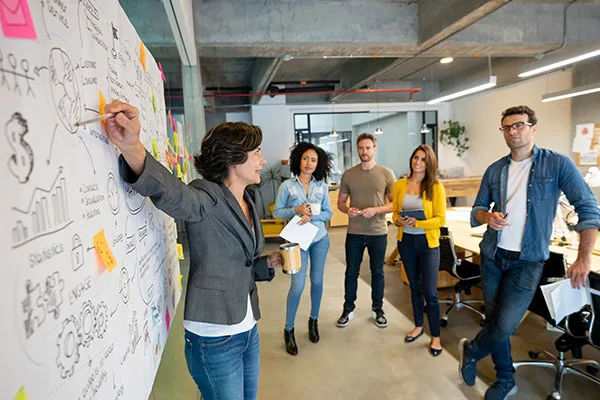
International Paralympic Committee: You want to have great, talented people and you want them to be innovative and take risks.
For me, the analogy I like to use a lot, too, is we’re trying to cultivate the mindset that you play for the badge on the front of the jersey, not for the name on the back of the jersey. That’s become even something I say so much that certain people that hear me say it the most might occasionally roll their eyes. It’s sticking in the sense that you can say something that quickly and people understand what’s what. It is like, “I feel a little bit like back in the jersey. Let’s get back to the badge.”
As an international sporting organization, you can use sports analogies whenever they occur. You don’t have to apologize for that at any point. You mentioned earlier in the conversation the process of executive decision-making. Can you give us an example or share your approach for how you know it is a CEO’s time to jump in and resolve an issue or it’s time to make the decision and it’s going to be on your desk when that decision gets made?
It’s an interesting question because it is something that I’ve grown into. Over the three years that I’ve been in the position, I probably have become more aware of the need for these moments and these decisions probably in the last couple of months. When I took over, it was only a few months before COVID. We got into a weird environment. Time stood still in some ways and the world changed in fairly important ways.
I had been with the organization since 2015, so I’d been here for four years before. That break in daily routine over time helped me see the organization differently. It gave me a way to almost objectify the organization a little bit more, get out of it, and see what we were doing and my role in it. I’ve come to understand my role as a member of the team, whether it’s the captain, coach, or CEO. Sometimes, I like to think of it as playing captain as long as I don’t get into the details too much.
There’s this sense of whether it’s because there’s a lack of consensus among the senior leaders or whether it’s because I realize, “I have a voice, too.” Whereas I am genuinely and generally inclined to encourage people to have their voice and their vision for what they want to do, I’m realizing more in my position, I’m here for a reason. Chief executive means something. There are times when it’s okay for me to put my stamp on where we want to go in terms of direction or what I think based on my experience and based on listening to everyone around me where we should head.
I’m not sure I can articulate it at this moment any better than that. Maybe come back and ask a little while later. I’ll have some better examples or a more concrete answer to that question. At the moment, it’s a bit of intuition and some knowledge. It’s not my first rodeo. I’m starting to get a clearer picture of when I step in and when I don’t.
The awareness that as the leader, you need to make that distinction between when you step in and when you don’t, there’s a lot of wisdom in that. It is recognizing that those are different moments. One may be on Tuesday morning and one on Wednesday afternoon. By knowing the difference, there is a lot of success, I’m sure, in your role and across the social profit sector. Making that distinction is an important part that not every leader has fully embraced at this point.
I want to pivot a little bit to the concept of diversity. It’s a word that many organizations use to describe themselves. Many are struggling to live up to the definition that they set for themselves when it comes to diversity. Your organization embodies diversity right at its core. It’s reflected in your team. It’s reflected in the work that you do every day and in the games that are presented every two years. Can you share your approach to creating that diversity and how you’ve woven it into the DNA of the organization?
Yeah. No offense, but the way you ask the question is as if we’re there. It’s a journey. I don’t think it’s a destination. We can always get better here. First of all, there’s the benefit of being an international organization. It’s a sports organization but also, we’re part of a social movement. That attracts a diverse group of people globally that want to be a part of it. That’s to our benefit. English is our formal language within the organization, but when you walk the halls you hear any number of conversations in different languages, it’s cool. We’re over 40 nationalities, and that number continues to go up. There are 80% non-German nationals and 20% German nationals here in the organization.
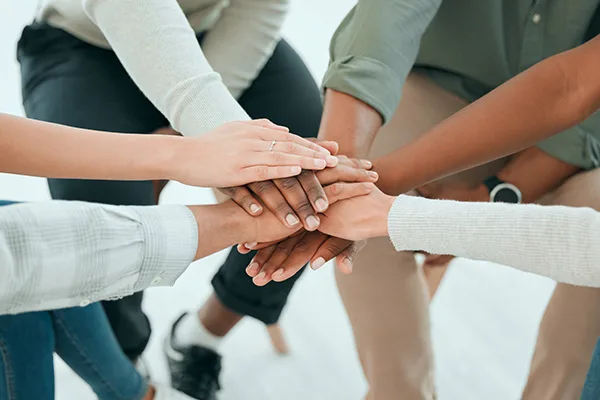
International Paralympic Committee: Diversity is a journey, not a destination.
With regional representation, we do quite well. Though, to be honest, we still struggle in the African continent. It comes down to when we advertise jobs and what we have realized. I’ve realized that through the help of some consultants. I would want to say that. We have some great people that work in diversity and inclusion in London, Stephen Frost, and Pooja Sachdev.
It’s not that people out there aren’t talented. When they present a certain background or demographic that isn’t talented, it is that we haven’t found them. We need to do a better job of getting the word out. We really focus on our recruiting strategy. We want to do better though. If my colleagues hear me say this where it sounds like I’m saying we have arrived, they’ll be upset with me, and probably rightly so. We still have a lot of room to grow here.
In terms of the last internal survey that we conducted, and we’re soon going to cut and induct another one, we had nearly 20% of our team identified as living with a disability. We have gender representation. We’re certainly striving not just to see what percentage of our team are women, but as you go up into the decision-making positions, what percentage it is. That’s important to me, for example. Half of our senior executive leadership team are women. We want to continue to grow those percentages throughout the organization.
It comes on at the recruiting step of making sure that you’re putting in extra effort to find people. Also, what’s important is that you’re creating an environment where people, whether they’re looking at you online or whether they’re listening to other people that have worked with you or other colleagues that are on the team, that it looks like a place that could be welcoming for them.
To grow those percentages throughout the organization, ensure that you put extra effort finding people. Share on XFor us, it can’t be about getting people in the door and calling it a day. We are a small team and we do need everybody to function. Whereas most people are living away from friends and family, we have to be creating an environment here where they feel satisfied and fulfilled and they have the promise and joy of doing something that is meaningful to them, and they feel valued. I’ll say this because it’s important. We are in the process of moving from a teenage startup organization to a more professionalized organization. That’s been the goal of the transition in the last couple of years that I’ve been in this role. It’s very much in the works where I would hate to say we’ve arrived.
How much is it that, as an organization, you represent disability inclusion? It’s in the name. It’s in everything you do. I’m sure that plays a role in who is attracted to working at the IPC. That concept of inclusion beyond disability inclusion, does that flow naturally? How do you make sure that it flows naturally within your team?
It represents some work. First of all, I don’t know if we’ll get to this or not, so let me insert it here. When we talk about disability, for me, we have conversations. Hopefully, you guys will see where I’m going with this. I’m going to start in a very different place. When we talked earlier about how we do a lot with a little, most of the time, people see our games. They see them two weeks after the Olympic Games. The two organizations, the International Olympic Committee and International Paralympic Committee are entirely independent organizations. We have our own governance structures. We are different and so forth. We’re not the same organization at all.
We enjoy a very positive working relationship with the International Olympic Committee. The fact that our games do happen two weeks after the Olympic Games is saying something. We’re incredibly grateful for that relationship. It’s a genuine caveat because I say that, but I’m going to compare the budget. With the IOC, they disperse 90% of the revenue every year. What that means is they disperse our annual budget every five days. When you put it in comparison to what you see for the Olympic Games and what you see in the Paralympic Games, our annual budget, which is around $20 million, is dispersed every five days by the IOC. Paralympic games aren’t the only thing we do. We are doing a lot with a little.
The question you asked is whether we have important discussions here with our team about things like salary and benefits. There is only so much we can do as a nonprofit because we want to spend as much money as we can in service of our members, those membership programs. It’s certainly a fair question for people that have uprooted and come to work here in Germany.
Disability may be 10 years or 20 years behind other social movements. There are important conversations happening in the world around gender equity and gender pay in sports, for example. There is important stuff about racial equity and LGBTQIA+. These are meaningful and necessary conversations that should be happening. I always think about disability as one that intersects all those.
Largely, we’re probably the best example of a marginalized group that continues to accept new members throughout people’s lifespans. You might find yourself in our group. We are nowhere near the center of the diversity agenda at the moment. As a sport organization first, we’re a little bit clumsy still in the world of social movements, but we are trying to do our best to bring a spotlight to this very important issue of human rights for people with disability.
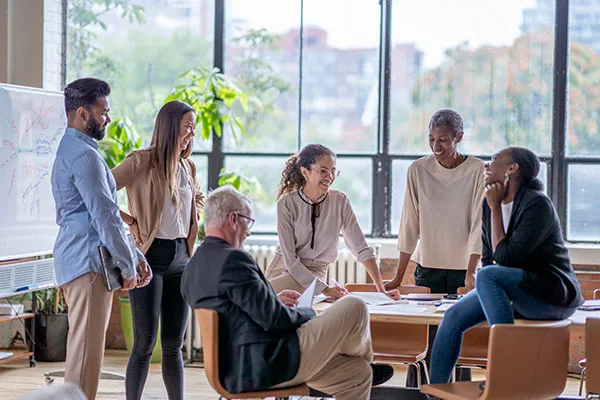
International Paralympic Committee: The International Paralympic Committee is the best example of a marginalized group that invites members throughout people’s lifespans.
Working my way back to your question, it is quite a lot of work in that people with disabilities are not a monolithic culture. It’s not a monolithic experience. Even in terms of sports, I played with guys who acquired their disability, and I played with guys like myself who were born with their disability. I have several pals. Those two experiences of disability can be incredibly different.
This is a generalization, but it gives you an insight into what I’m saying. You’ll hear people who were born with a disability leaning into it. Over time, they realize that where other people saw weakness, they found strength. That came through leaning into it. It didn’t come from overcoming something you can’t overcome yourself. Whereas people who have acquired a disability, oftentimes, it is overcoming this challenge in finding a new way of being. Ultimately, they’re similar challenges but they can be very different experiences.
We haven’t even talked about athlete classification. There’s a difference between what we do and what the Special Olympics does, the Deaflympics, or the Invictus Games. These are different groups and important groups providing opportunities for athletes with disabilities but from different frameworks. Our mindset is we want to grow the pie for everyone. We don’t want to get involved in this silly, “We deserve money more than that group or support or resource,” but it is a struggle when you’re dealing with a disability. As a social movement, it’s not where these other conversations are.
We are able to attract very talented people, but I would also say that we’re not in a place yet where we have our pick of people per se, whether because of salary or location. Certainly, for people who live with disabilities, some have a real need to live in the environment and communities in which they live. They may have their medication regimen. They may have treatment regimens, prescriptions, friends, family, and support structures. It’s not the easiest thing for someone to uproot and move to Bonn, Germany where all that stuff has to start over.
You might ask, “Why not let people work anywhere they want to in the world remotely?” There are all kinds of German law regulations, like tax laws. Also, you have the issue of if the people who live with the disability are the ones who are working remotely, that is not the mindset or the cultural environment that you want to be cultivating in your organization. To be honest with you, I don’t know that we have it completely sorted out. It is a challenge. It’s not something that comes naturally despite the fact that we work in sports for people with disabilities every day.
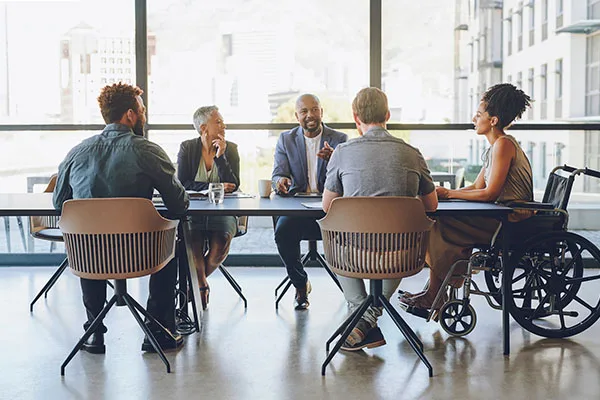
International Paralympic Committee: It is not the mindset or cultural environment you want to cultivate in your organization if people with disability are working remotely.
Your answer there gives some insight into the complexity and the nuance that animate the disability inclusion movement, disability movement, and social movement. Also, the nuance that you share there makes it sound like you should probably be the CEO of the International Paralympic Committee. It is understanding that nuance exists and being able to recognize those differences and see the commonality and where the distinctions matter and where they don’t.
One of the questions I have is you mentioned you’ve been with the organization for about nine years. You’ve been CEO for the last few years. You are rapidly professionalizing the organization. That was part of your mandate, and that’s the work you’re undertaking. Being a CEO, even a CEO in a teen concept, can be a lonely job. When you have a particular challenge or an issue that you’re struggling with, who do you turn to to talk that out?
I have a really good relationship with our president, Andrew Parsons. Andrew and I have worked very mindfully to draw a bright line between governance and management issues for the IPC. Our board is elected every four years by the members including our president and vice president. Andrew was elected in 2017 and then hired me in 2019. He is a good sounding board for me because before he was president, he also was in charge of the NPC for Brazil for many years. He understands the movement, the challenges, and the members. He also ran an organization. He is a helpful resource.
I lean on our various chiefs for various things. Kristina Molloy, who we took happily from your neck of the woods in Canada, was with Minister Carla Qualtrough for the last few years as her policy director and oversaw all kinds of important changes in federal law for people living with a disability. She helps us understand the world that we live in much better in terms of societal change, social change, and impact work.
Depending on the challenge, I can lean on certain people, even on the team. Even if the challenges are within the team, there are ways for me. I lean on our general counsel quite a lot, too, Liz Riley, because she has more of an objective view. She thinks about risk in ways that are helpful for me as I’m thinking about risk. Otherwise, there have been some people within the movement that I’ve turned to. Regrettably, for various reasons, they’ve left.
You are relying on your team and relying on the people around you. We’re going to need to have episode two where we talk about the governance of the IPC because of the very intricate, detailed, and hard work to be on the board and complicated to support. As we come to the end of our conversation, I want to ask you my favorite question to ask all of our guests. What are you looking forward to?
I appreciate that. I’m looking forward to celebrating with everybody. As a social movement, as an organization, we are standing on the shoulders of giants. We are largely volunteer-based and only professionalized in the last couple of decades. There are people who have been committed to giving those who live with a disability the rights and opportunities that they are due.
Our games’ evidence is that when you give athletes the same opportunity that able-bodied athletes have, you see them do incredible things on the field of play. For me and for those various leaders in our movement, that should serve as one example of what these same individuals and what individual disabilities can do in other contexts. If you give a person with a disability to have a chance to succeed in office, they will. In a boardroom, they will. In a classroom, they will. For me, what I look forward to is realizing that and seeing all the success stories that come from people who are given the chance that they are due, not as an act of charity but as an act of right. Let’s build those opportunities together and we will continue to see amazing things.
When you give athletes the same opportunities that able-bodied athletes have, you see them do incredible things on the field of play. Share on XWhere people see weakness, I routinely find strength. For these individuals who have leaned into their disability and embraced it, which is certainly not been easy, they have come out the other side with a sense of strength, vision, and hope that is instructive for the rest of us. That’s a group that we should tap into and also support as they want to continue to achieve great things.
What a great way to leave the conversation. Thank you very much for sharing it, and thank you for being on the show.
It was a pleasure. Thanks for your time.
Important Link
About Mike Peters
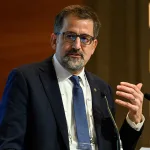 Mike Peters is a two-time Paralympian who captained USA in 7-a-side Football at the Atlanta 1996 and Athens 2004 Paralympic Games. One month after retiring from the sport, he was awarded his PhD in communication from the University of Arizona.
Mike Peters is a two-time Paralympian who captained USA in 7-a-side Football at the Atlanta 1996 and Athens 2004 Paralympic Games. One month after retiring from the sport, he was awarded his PhD in communication from the University of Arizona.
He joined the International Paralympic Committee (IPC) in March 2015 as Chief of Staff and later became Chief Operating Officer in July 2018. He was appointed Chief Executive Officer in October 2019 having served six months as Interim CEO.
Deeply passionate about Para sport, diversity and inclusion, Peters volunteered on national and international governance committees for more than 12 years. During this time, he served for six years on the United States Olympic and Paralympic Committee’s Athletes Advisory Council and was an appointed member of the six-person IPC’s Legal and Ethics Committee. He also served as a legal officer for the IPC during the London 2012 Paralympic Games.
Peters’ professional career has travelled a winding path, grounded in a desire to understand, advocate for and support the advancement of others. From 2001-2006, he served as a full-time faculty member at the University of Washington, where he taught a range of courses that included Health Communication and Quantitative Research Methodology, while researching the impact of communication competency on socio emotional and marital adjustment following the diagnosis and treatment of breast cancer. With a desire to be more directly be involved in advocacy, Peters attended the University of Washington School of Law from 2006-2009. Upon graduation, Peters was awarded an Equal Justice Works Fellowship (funded by Microsoft Corporation) and served as an immigration defense attorney for juveniles with the non-profit law firm, Northwest Immigrant Rights Project, in Seattle.
During this time, Peters also voluntarily served as a commissioner on the Seattle Human Rights Commission, including one year as the City’s Chairperson of the Discrimination Appeals Committee. From 2012-2015, he worked for the City of Seattle as the International Programs Director in the Office of Intergovernmental Relations, where he strengthened his political acumen and diplomacy skills.
Peters feels incredibly fortunate to have the opportunity to serve the Paralympic Movement as IPC CEO and counts himself lucky to have aligned his passion and profession.”

